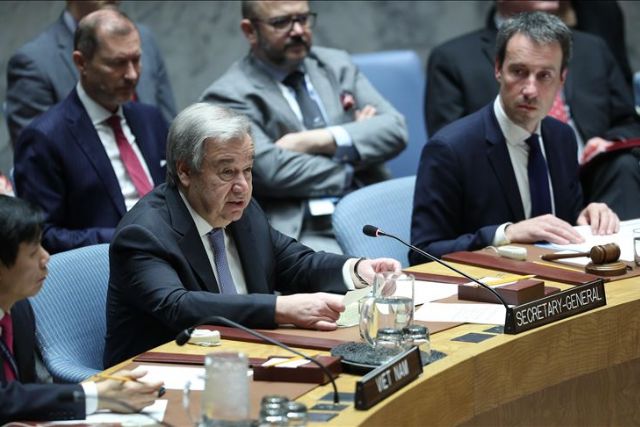
Fabiola Cardozo / NNOMY / English - La Pandemia del Covid 19 causa estragos a diario, afectando todas las aristas de la vida social y en todos los países, ante ello la sociedad estadounidense no escapa de sus negativas consecuencias.
Si bien se reconoce que la pandemia afecta indudablemente la economía y como a partir de ella sectores como la salud, la educación, la cultura, también cobran algún impacto desfavorable, son las decisiones políticas de sus dirigentes las que orientan las prioridades de un país frente a situaciones tan adversas como las que se viven en la actualidad.
Un reciente artículo del Washington Post señala como El Pentágono usó el dinero de los contribuyentes destinado a máscaras e hisopos para fabricar piezas de motores a reacción y chalecos antibalas:
"La Ley Cares, que el Congreso aprobó a principios de este año, le dio al Pentágono dinero para "prevenir, prepararse y responder al coronavirus". Pero unas semanas después, el Departamento de Defensa comenzó a cambiar la forma en que otorgaría el dinero de una manera que representaba una desviación importante de la intención del Congreso.
Los pagos se realizaron a pesar de que los funcionarios de salud de EE. UU. Creen que aún quedan importantes brechas de financiamiento en la respuesta a la pandemia. Robert Redfield, director de los Centros para el Control y la Prevención de Enfermedades, dijo en un testimonio en el Senado la semana pasada que los estados necesitan desesperadamente $ 6 mil millones para distribuir vacunas a los estadounidenses a principios del próximo año. Muchos hospitales de EE. UU. Aún enfrentan una grave escasez de mascarillas N95. Estos son los tipos de problemas que originalmente se pretendía resolver con el dinero."
¿Cuáles son realmente las necesidades de la población en tiempos de pandemia? ¿Es ahora, el sector militar el que debe priorizarse?, preguntas como estas nos llevan a revisar algunas cifras.
Estas son las estadísticas de pobreza de2019 en EE. UU. Publicadas en septiembre de 2020 por la Oficina del Censo de EE. UU:
• La tasa de pobreza infantil es del 14,4%, por lo tanto, aproximadamente uno de cada seis niños se encuentra en situación de pobreza. Esta es una estadística de pobreza preocupante para muchos estadounidenses porque los niños no pueden influir en sus condiciones de vida.
• Si bien la tasa de pobreza para la población en su conjunto es del 10,5%, la tasa varía mucho según la raza. Los negros tienen la tasa de pobreza más alta con un 18.8% y los blancos no hispanos la más baja con un 7.3%. La tasa de pobreza para los negros y los hispanos es más del doble que la de los blancos no hispanos.
• Los adultos que trabajan a tiempo completo tienen una tasa de pobreza baja del 2.0%, lo cual no es sorprendente. Los 2,3 millones de trabajadores a tiempo completo que se encuentran en la pobreza generalmente tienen trabajos mal pagados, como un trabajo de salario mínimo que paga $ 16,000 por año, y tienen dos o más hijos, lo que lleva a la familia a la pobreza. Hay 42,9 millones de adultos entre 18 y 64 años (edad laboral) que no están trabajando. Suman el 22% de los adultos en edad de trabajar, pero representan el 61% de los adultos en edad de trabajar en la pobreza.
• 14,4 millones de adultos en edad laboral tienen una discapacidad que representa el 7% de la población activa. Tienen una tasa de pobreza del 22,5%. Si bien esta es una alta tasa de pobreza, es menor que la tasa de adultos no trabajadores del 26,4%.
• El nivel educativo alcanzado por las personas tiene un impacto dramático en la pobreza. El 23,7% de los adultos mayores de 25 años sin un diploma de escuela secundaria se encuentran en la pobreza frente al 3,9% de los que tienen un título universitario.
A pesar de que estás cifras reflejen la situación del 2019, no dan esperanza de un mejor panorama para 2020, con la llega del covid muchas de estas cifras pueden incrementarse y agudizar la pobreza y la marginación.
La situación del Covid 19 acrecienta otras crisis sociales y expone las desigualdades, haciendo a niños, adultos mayores, negros, inmigrantes, discapacitados y personas sin acceso a la educación, los más propensos a la pobreza y a vivir de forma más intensa una crisis humanitaria caracterizada por dificultades en el acceso a la salud, a la alimentación y a la vivienda como derechos básicos. El panorama actual es caracterizado por el desempleo, la reducción de ingresos y el aumento de gastos médicos, lo que produce a su vez dificultades para el pago de alquileres y por ende el incremento de desalojos.
EE.UU. carece de un sistema firme de protección social, donde las ayudas económicas otorgadas a través de cheques semanales del Estado, son insuficientes y no llegan a toda la población necesitada.
"El presidente Trump firmó un Memorando Presidencial que proporcionó $ 300 por semana para los trabajadores desempleados. Sin embargo, la acción del presidente Trump fue limitada. Esta ley requería el uso de fondos de FEMA y los estados tenían que optar por participar en el programa. La cantidad total de fondos está limitada a seis semanas de beneficios y algunos estados ya se han quedado sin dinero bajo este programa. Esto deja a los trabajadores desempleados solo en condiciones de recibir sus beneficios estatales de desempleo, que oscilan entre $ 300 y $ 500 por semana. (Ver: https://www.forbes.com/sites/ryanguina/2020/09/23/next-stimulus-bill-needs-to-address-these-3-issues/#573b455c2769)
Actualmente se reportan 7,53 millones de casos y 211 mil muertes por Covid-19 en Estados Unidos, a sabiendas que es una afección respiratoria que se puede propagar de persona a persona, el uso de mascarillas y la compra de insumos tanto para la detección como el tratamiento de este virus, resulta de suma importancia. Sin embargo, el interés en el negocio de la guerra sigue acaparando grandes sumas de recursos y el impulso en la industria militar cobra fuerza.
“El fondo de $ 1 mil millones es solo una fracción de los $ 3 billones en gastos de emergencia que el Congreso aprobó a principios de este año para hacer frente a la pandemia.
Pero en los meses posteriores a la aprobación del paquete de estímulo, el Pentágono cambió la forma en que se usaría el dinero. Decidió dar a los contratistas de defensa cientos de millones de dólares del fondo, principalmente para proyectos que tienen poco que ver con la respuesta al coronavirus. Los abogados del Departamento de Defensa determinaron rápidamente que el dinero podría usarse para la producción de la defensa, una conclusión que luego el Congreso impugnó”. (Ver: https://www.washingtonpost.com/business/2020/09/22/covid-funds-pentagon/)
En el transcurso de la pandemia, el Secretario General de las Naciones Unidas, António Guterres, ha declarado fervientemente cuales son los retos a superar y las necesidades a atender:
“La pandemia ha revelado la fragilidad de nuestro mundo. Ha puesto al descubierto riesgos que hemos ignorado durante décadas: sistemas de salud inadecuados; brechas en la protección social; desigualdades estructurales; degradación ambiental; la crisis climática. Regiones enteras que habían logrado avances en la erradicación de la pobreza y la reducción de la desigualdad han experimentado, en cuestión de meses, un retroceso de años. El virus representa un riesgo mayor para los más vulnerables: los que viven en la pobreza, las personas mayores y las personas con discapacidad y enfermedades preexistentes”. (Ver: https://www.un.org/en/coronavirus/tackling-inequality-new-social-contract-new-era)
“El COVID-19 es nuestro enemigo común. Debemos declarar la guerra contra este virus. Ello significa que los países tienen la responsabilidad de prepararse, acelerar e intensificar las medidas. ¿Cómo? Aplicando estrategias de contención eficaces; activando y mejorando los sistemas de respuesta de emergencia; aumentando drásticamente la capacidad de realización de pruebas y la atención a los pacientes; preparando los hospitales, asegurando que tengan el espacio, los suministros y el personal necesarios; y desarrollando tratamientos médicos vitales”. (Ver: https://www.un.org/en/coronavirus/covid-19-we-will-come-through-together)
“El gasto en salud debe incrementarse de inmediato para satisfacer las necesidades urgentes y el aumento de la demanda —ampliar la cobertura de las pruebas de detección, reforzar las instalaciones, retribuir a los trabajadores de la salud y garantizar la suficiencia de suministros—, respetando plenamente los derechos humanos y evitando el estigma”. (Ver: https://www.un.org/en/un-coronavirus-communications-team/above-all-human-crisis-calls-solidarity)
Así mismo, el Secretario ha hecho un llamado al cese de todos los conflictos armados, y a la necesidad imperiosa de perpetuar la guerra:
“Es hora de “poner en encierro” los conflictos armados, suspenderlos y centrarnos juntos en la verdadera lucha de nuestras vidas. A las partes beligerantes les digo: Cesen las hostilidades. Dejen de lado la desconfianza y la animosidad. Silencien las armas; detengan la artillería; pongan fin a los ataques aéreos. Es crucial que lo hagan. Para ayudar a crear corredores a fin de que pueda llegar la ayuda vital. Para abrir oportunidades de valor incalculable para la diplomacia. Para llevar esperanza a los lugares más vulnerables al COVID-19.”. (Ver: https://www.un.org/en/un-coronavirus-communications-team/fury-virus-illustrates-folly-war)
La actuación del gobierno estadounidense deja mucho que desear, no debe ser hoy ni nunca la guerra una prioridad para una nación. El militarismo arraigado en toda la estructura social debe ser detenido.
Recursos:
Covid y Militarismo - Descargue este artículo como documento de Word
###

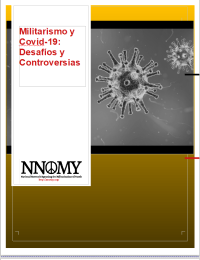
 Gary Ghirardi / NNOMY - First disclosures: This Op-ed is being offered up by myself, Gary Ghirardi, for the September 2020 newsletter of the National Network Opposing the Militarization of Youth, themed: Teaching Kids to Kill, a vehicle of NNOMY's communications efforts to give voice to the few who stand up to endless wars and largely public ignorance and indifference to what is done in their names. It in no way reflects the opinions of the diversity of those organizations that collectively represent the bulk of groups, large and small, who offer up youth demilitarization efforts nationally in the not so United States of America.
Gary Ghirardi / NNOMY - First disclosures: This Op-ed is being offered up by myself, Gary Ghirardi, for the September 2020 newsletter of the National Network Opposing the Militarization of Youth, themed: Teaching Kids to Kill, a vehicle of NNOMY's communications efforts to give voice to the few who stand up to endless wars and largely public ignorance and indifference to what is done in their names. It in no way reflects the opinions of the diversity of those organizations that collectively represent the bulk of groups, large and small, who offer up youth demilitarization efforts nationally in the not so United States of America.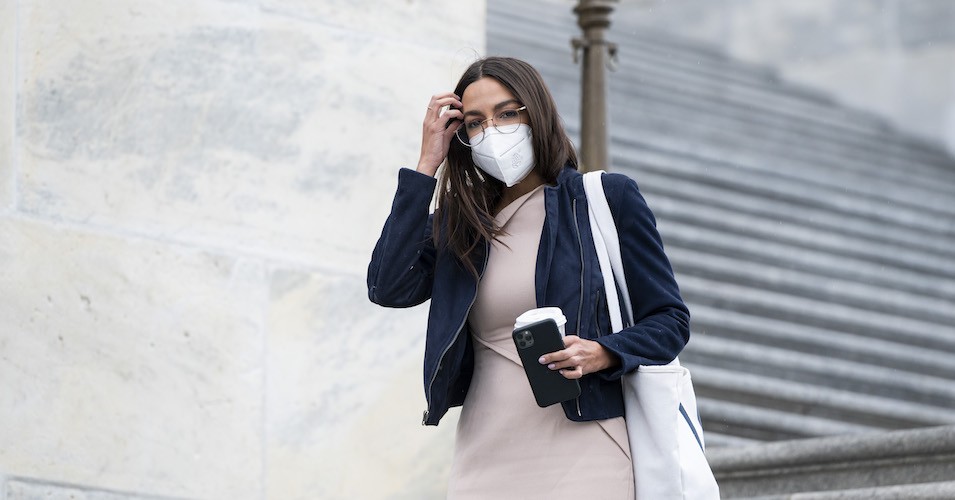 Rep. Alexandria Ocasio-Cortez on Monday proposed blocking the military from recruiting in schools, describing the practice as a predatory attack on disadvantaged children who already suffer from underfunded resources in their learning environments.
Rep. Alexandria Ocasio-Cortez on Monday proposed blocking the military from recruiting in schools, describing the practice as a predatory attack on disadvantaged children who already suffer from underfunded resources in their learning environments. 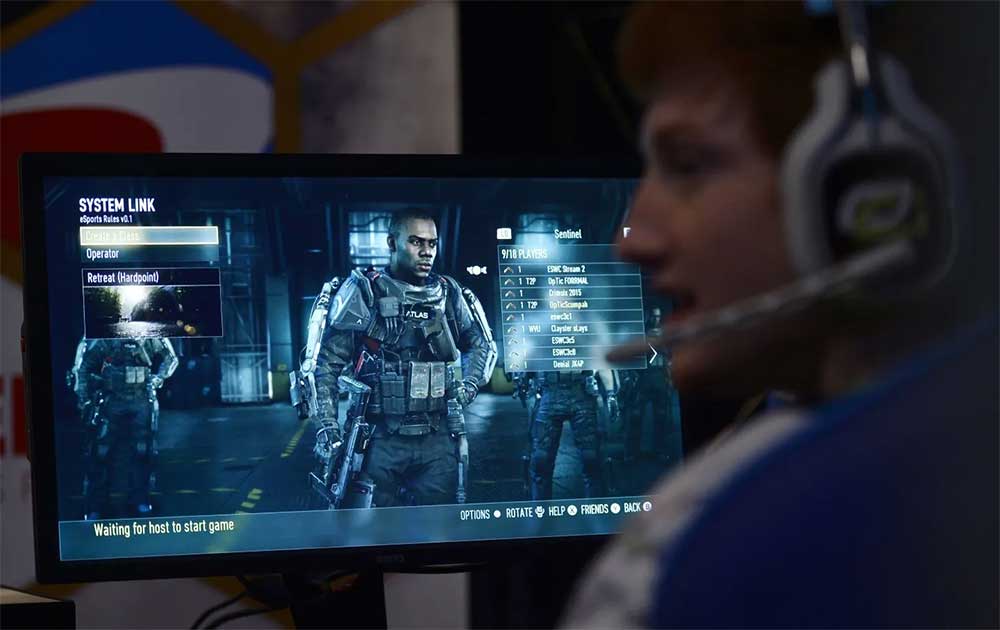 Jordan Uhl / The Nation - Have a nice time getting banned, my dude,” Army recruiter and gamer Joshua “Strotnium” David told me right before he booted me from the US Army’s Twitch channel. I had just reminded viewers of the United States’ history of atrocities around the globe, and helpfully provided a link to the Wikipedia page for US war crimes.
Jordan Uhl / The Nation - Have a nice time getting banned, my dude,” Army recruiter and gamer Joshua “Strotnium” David told me right before he booted me from the US Army’s Twitch channel. I had just reminded viewers of the United States’ history of atrocities around the globe, and helpfully provided a link to the Wikipedia page for US war crimes.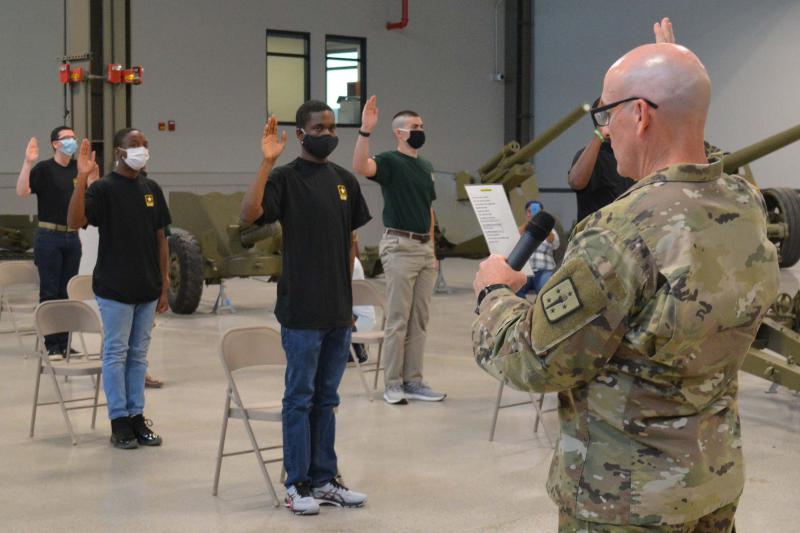
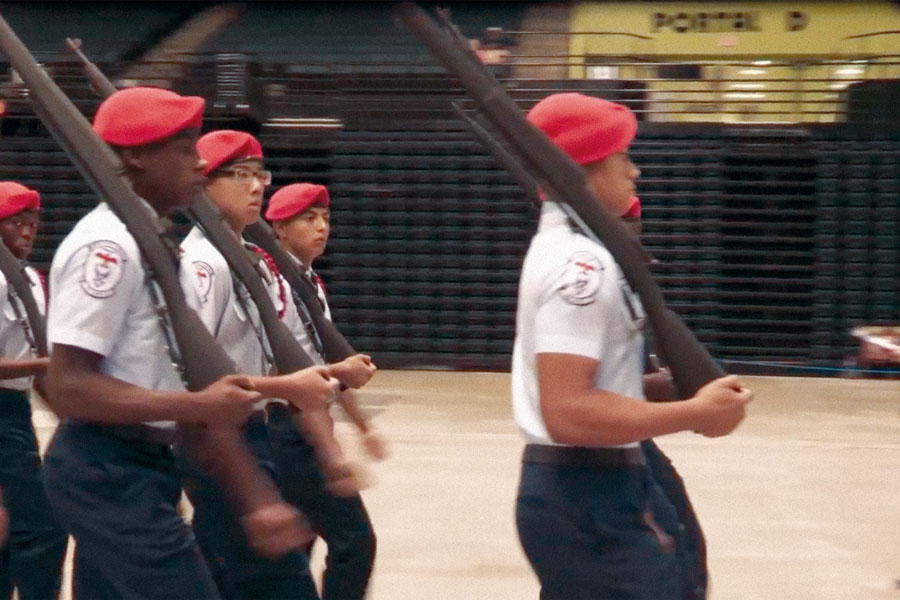
 Though the
Though the  David Swanson is the author of the new book, Daybreak: Undoing the Imperial Presidency and Forming a More Perfect Union, by Seven Stories Press and of the introduction to The 35 Articles of Impeachment and the Case for Prosecuting George W. Bush by Dennis Kucinich. In addition to cofounding AfterDowningStreet.org, he is the Washington director of Democrats.com and sits on the boards of a number of progressive organizations in Washington, DC.
David Swanson is the author of the new book, Daybreak: Undoing the Imperial Presidency and Forming a More Perfect Union, by Seven Stories Press and of the introduction to The 35 Articles of Impeachment and the Case for Prosecuting George W. Bush by Dennis Kucinich. In addition to cofounding AfterDowningStreet.org, he is the Washington director of Democrats.com and sits on the boards of a number of progressive organizations in Washington, DC. Jorge Mariscal is the grandson of Mexican immigrants and the son of a U.S. Marine who fought in World War II. He served in the U.S. Army in Vietnam and currently teaches at the University of California, San Diego.
Jorge Mariscal is the grandson of Mexican immigrants and the son of a U.S. Marine who fought in World War II. He served in the U.S. Army in Vietnam and currently teaches at the University of California, San Diego. Matt Guynn plays the dual role of program director and coordinator for congregational organizing for On Earth Peace, building peace and nonviolence leadership within the 1000+ congregations of the Church of the Brethren across the United States and Puerto Rico. He previously served a co-coordinator of training for Christian Peacemaker Teams, serving as an unarmed accompanier with political refugees in Chiapas, Mexico, and offering or supporting trainings in the US and Mexico.
Matt Guynn plays the dual role of program director and coordinator for congregational organizing for On Earth Peace, building peace and nonviolence leadership within the 1000+ congregations of the Church of the Brethren across the United States and Puerto Rico. He previously served a co-coordinator of training for Christian Peacemaker Teams, serving as an unarmed accompanier with political refugees in Chiapas, Mexico, and offering or supporting trainings in the US and Mexico. Rick Jahnkow works for two San Diego-based anti-militarist organizations, the Project on Youth and Non-Military Opportunities and the Committee Opposed to Militarism and the Draft. He can be reached at:
Rick Jahnkow works for two San Diego-based anti-militarist organizations, the Project on Youth and Non-Military Opportunities and the Committee Opposed to Militarism and the Draft. He can be reached at:  Pat Elder was a co-founder of the
Pat Elder was a co-founder of the 